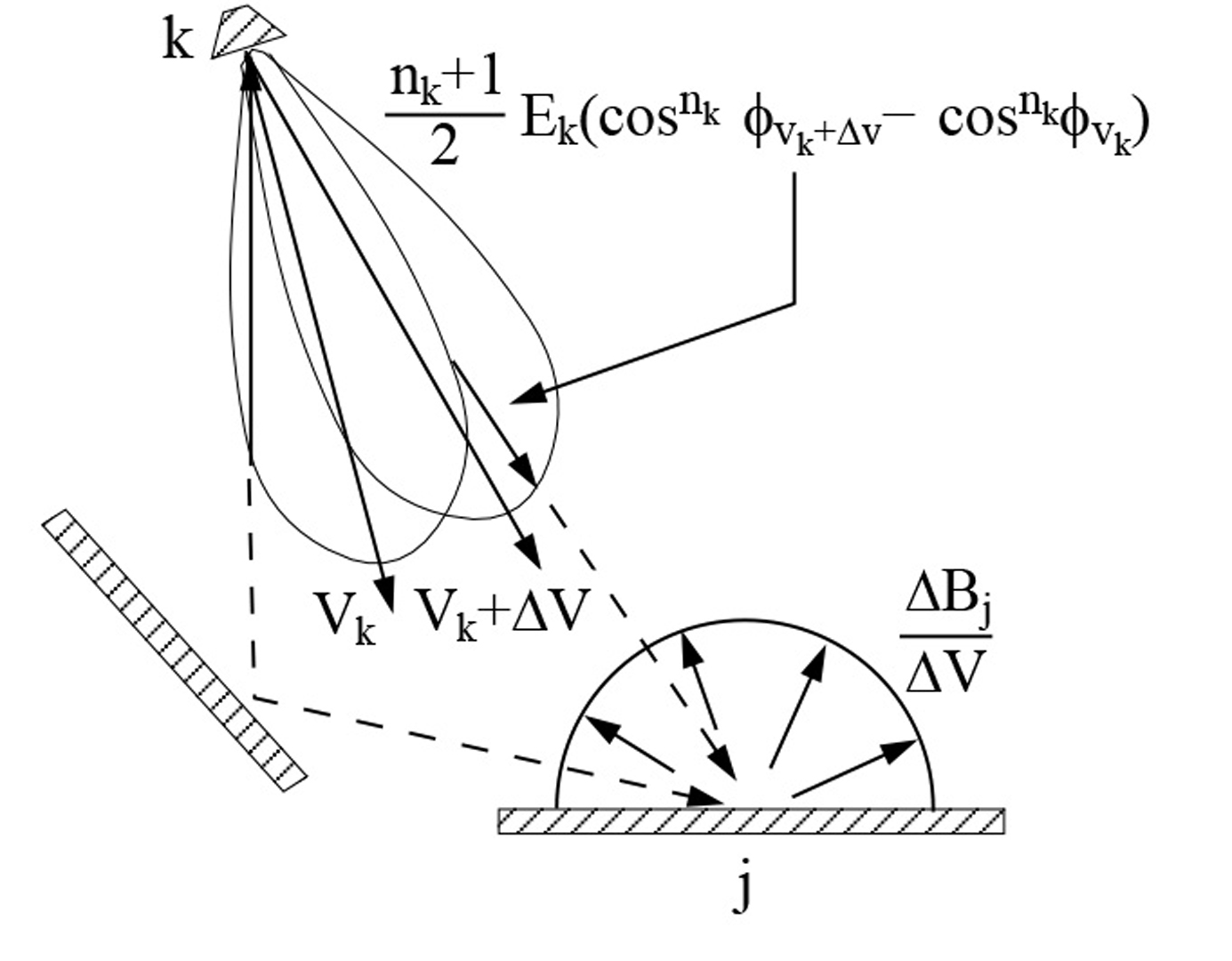“Radioptimization: goal based rendering” by Kawai, Painter and Cohen
Conference:
Type(s):
Title:
- Radioptimization: goal based rendering
Presenter(s)/Author(s):
Abstract:
This paper presents a method for designing the illumination
in an environment using optimization techniques applied to
a radiosity based image synthesis system. An optimization
of lighting parameters is performed based on user specified
constraints and objectives for the illumination of the environment. The Radioptimization system solves for the “best”
possible settings for: light source emissivities, element reflectivities, and spotlight directionality parameters so that the
design goals, such as to minimize energy or to give the room
an impression of “privacy”, are met. The system absorbs
much of the burden for searching the design space allowing the user to focus on the goals of the illumination design
rather than the intricate details of a complete lighting specification.
The system employs an object space perceptual model
based on work by Tumblin and Rushmeier to account for
psychophysical effects such as subjective brightness and the
visual adaptation level of a viewer. This provides a higher
fidelity when comparing the illumination in a computer simulated environment against what would be viewed in the
“real” world. Optimization criteria are based on subjective
impressions of illumination with qualities such as “pleasantness”, and “privateness”. The qualities were selected based
on Flynn’s work in illuminating engineering. These criteria were applied to the radiosity context through an experiment conducted with subjects viewing rendered images, and
the respondents evaluated with a Multi-Dimensional Scaling
analysis.
References:
1. J. J. Chang and J. D. Carroll. How to use INDSCAL: a computer program for canonical decomposition of N- way tables and individual differences in multidimensional scaling. Technical report, Bell Telephone Laboratories, 1972.]]
2. M. F. Cohen, S. E. Chen, J. R. Wallace, and D. P. Greenberg. A progressive refinement approach to fast radiosity image generation. Computer Graphics (,gIG- GRAPH ’88 Proceedings), 22(4):75-82, July 1988.]]
3. M. F. Cohen and D. P. Greenberg. The hemi-cube: A radiosity for complex environments. Computer Graphics (SIGGRAPH ’85 Proceedings), 19(3):31-40, July 1985.]]
4. J. g. Flynn. A study of subjective responses to low energy and nonuniform lighting systems. Lighting Design and Application, Feb. 1977.]]
5. J. g. Flynn, C. Hendrick, T. J. Spencer, and O. Martyniuk. A guide to methodology procedures for measuring subjective impressions in lighting. Journal of the IES, Jan. 1979.]]
6. J. E. Flynn, T. J. Spencer, O. Martyniuk, and C. Hendrick. Interim study of procedures for investigating the effect of light on impression and behavior. Journal of the IES, Oct. 1973.]]
7. P. E. Green, F. J. Carmone, Jr., and S. M. Smith. Multidimensional Scaling Concepts and Applications. Smith, Allyn, and Bacon, 1989.]]
8. P. Hanrahan, D. Salzman, and L. Aupperle. A Rapid Hierarchical Radiosity Algorithm. Computer Graphics (SIGGRAPH ’91 Proceedings), 25(4):197-206, July 1991.]]
9. J.T. Kajiya. The rendering equation. Computer Graphics (SIGGRAPH ’86 Proceedings), 20(4):143-150, Aug. 1986.]]
10. H. N. McKay. Energy optimization and quality lighting design. Lighting Design and Application, Mar. 1986.]]
11. P. Y. Papalambros and D. J. Wilde. Principles of Optimal Design. Cambridge University Press, Cambridge, England, 1988.]]
12. P. Poulin and A. Fournier. Lights from highlights and shadows. 1992 Symposium on Interactive 3D Graphics, pages 31-38, Mar. 1992.]]
13. W. H. Press, B. P. Flannery, S. A. Teukolsky, and W. T. Vetterling. Numerical Recipes. Cambridge University Press, New York, 1986.]]
14. J. B. Rosen. The gradient projection method for nonlinear programming, part i: Linear constraints. SIAM, 8:181-217, 1960.]]
15. J. B. Rosen. The gradient projection method for nonlinear programming, part ii: Non-linear constraints. SIAM, 9:514-532, 1961.]]
16. P. C. Sorcar. Architectural Lighting for Commercial Interiors. John Wiley and Sons Inc., 1987.]]
17. S. S. Stevens and J. C. Stevens. Brightness function: Effects of adaptation. Journal of the Optical Society of America, 53(3), Mar. 1963.]]
18. J. Tumblin and H. Rushmeier. Tone reproductions for realistic computer generated images. Technical Report GIT-GVU-91-13, Graphics, Visualization, and Usability Center, Georgia Institute of Technology, July 1991.]]





